#i have to defend myself on the perceived concept that i know nothing about camping LOL
Explore tagged Tumblr posts
Text
earlier in the week my work section was doing some rest-of-the-year planning and we played a game of family feud to break up the monotony. and one of the questions was "things to take on a camping trip." my team guessed tent (#1 answer) and decided to play it, but we kept blanking out on the answers and ended up losing the round. so somebody made some joke like "well now we know which people here don't like to go camping!"
and i took personal offense to that, seeing as i have written 78,000 words of a story that is almost completely centered around backpacking! it's not my fault that i kept coming up with things that were too specific for the game! i mean honestly. WATER wasn't even on the board, why would there be water filters or personal locator beacons or camp stoves on there?????
#dsljfkslfjslkfs#yeah so out of 100 randomly polled americans 'smores' was like the third top answer#and im over here like uhhhhhhhh i dont think anyone else knows what a sawyer water filter or a garmin inreach is--#i have to defend myself on the perceived concept that i know nothing about camping LOL#(i wasnt really offended ofc im just dramatizing)
4 notes
·
View notes
Text
Effective Copywriting
Personas Development:
The nonprofit foundation I selected for this course the Animal Legal Defense Fund. Primarily an organization comprised of lawyers who fight for animal rights within the legal system, research uncovered this category represents a broad spectrum of personalities. Caring for and defending animal rights touches everyone in one way or another but, for those closely involved, they do so because it fulfills a sense of nurturing. According to Felton (2013), this is the need to provide care for others, to have and protect. Parallel to that basic need, being associated with this organization also fulfills a sense of affiliation. The need to be closely associated with others, the need for relationship (Felton, 2013).
With such a broad spectrum of people to choose from for this project, I decided to create two persona’s that are closely tied to the subject of helping animals and belonging to a community of supporters but, differentiating them by their age groups, interests, and positions in their professional life. The first of the persona I created is tied to the cause based on her roots as an animal farmers daughter. At the age of 25, she is modern, trendy, and highly into social media as a form of communication. At such a young age, I made her a college student just starting out in pursuit of a career in Animal Medicine. The second persona I used as a target audience was someone with a bit more experience. He is a male, 40 years of age, that is not as connected to the digital age as the previous younger example. This person is very much into reading books, magazines, and is already well established in his careers as a Wildlife Biologist. Understanding these two individuals in the context of a target audience for the ad campaign allowed me to develop copy and imagery for the ads that speak directly to them in an organic way that connects with who they are and their interests.
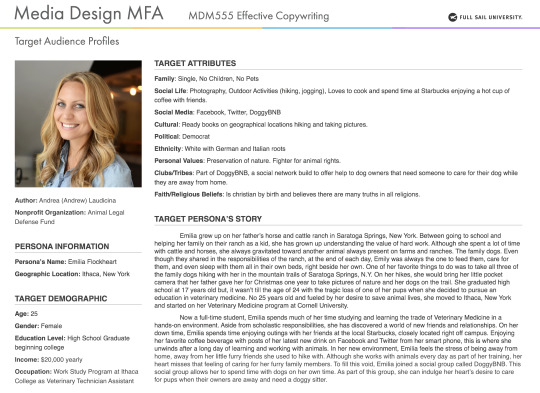
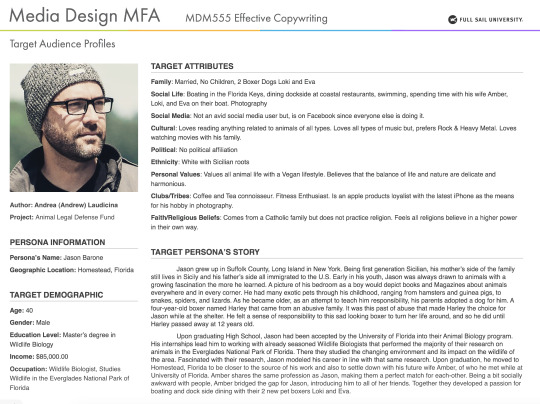
Testimonial Sketches:
The first round of sketches I created were a very rough start for me in deciding how I would communicate to my audience. My first ideas were a bit too dramatic as I used the idea of Puppy Mills being like Nazi War camps with comparisons to the Holocaust. While the idea has a big shock factor too it, it was too far of a departure from what the message of my nonprofit organization should be. With a bit more thought placed into how the nonprofit foundation needed to be perceived, I dialed down the drama from my original sketches to a message that will represent the organization from a position of caring and perseverance. The testimonial positions I decided to use were that of:
1. Extreme User– someone who is highly involved with animal rights and always present at demonstrations.
2. Expert– a person that has achieved a high degree of recognition in the field of animal medicine that will bring a trusted standpoint on the issue.
3. Founding Member – of the organization to give a human face to the brand of the organization.
4. Celebrity – to stimulate interest from those who are highly media driven and follow the careers of these media stars.
5. Historical Figures, Unreal People – a character with an unusual connection to the cause.
6. Just Plain Folk – to show the issue from the point of view from someone who has been affected of touched by the issue in some way (Felton, 2013, pp. 241-246).
Out of the 6, I chose to move forward with an Expert, Founding Member, and Just Plain Folk. The reasons for this are because they possess the more real and believable connection to what the foundation stands for. Also, they have the closest relationship with the two persona’s I created for the target audience. Both of my persona’s are plain folk, one of them on their way to becoming a professional and the other already as a professional in a field related to animals. I created an ad with the founding member so that my audience can relate better to the company on a personal level. While the remaining three would make great ads as well, the 3 chosen ones had a higher probability of connecting with the target personas I developed.
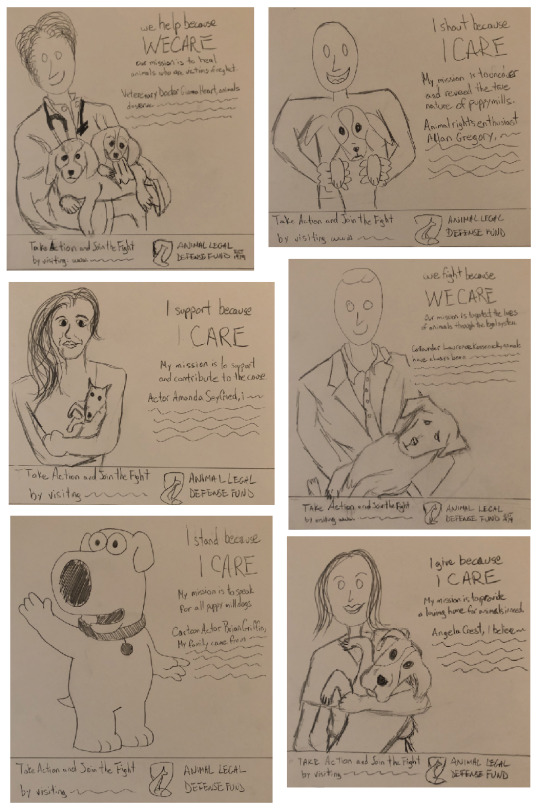
3 Initial Compositions:
As we handed in our three initial comps in tandem with our original 6 sketches, my entries revolve around the ideas I developed for the Holocaust. As demonstrated by my initial 3 comps., the direction I decided to take was not in line with the idea of the overall exercise. I communicated messages that were outside of the character for Animal Legal Defense Fund and I stimulated emotions that could have created a negative response from supporters. My initial messages did not speak directly and relate to my target audience. Felton (2013) says “The essential rule is to always understand that your job is to create a bridge between the brand or the company you’re talking about and the people you’re trying to talk to. Another of my mistakes is that I said too much. The copy in all of my initial comps were too wordy and communicated information that could easily overwhelm a reader. Felton (2013) also demonstrates this in his example of Parallelism. He begins with a long wordy phrase description, shortens it by focusing on key words, then shortens it once again to make it parallel by only using words necessary to communicate the idea, and nothing more. Finally, my initial ads are too different from one another. They do not affectively communicate the brand the same way. If you saw the ads separately, the only thing that would tie them together is the use of the company logo. The treatments in composition and aesthetics do not work together from ad to ad.
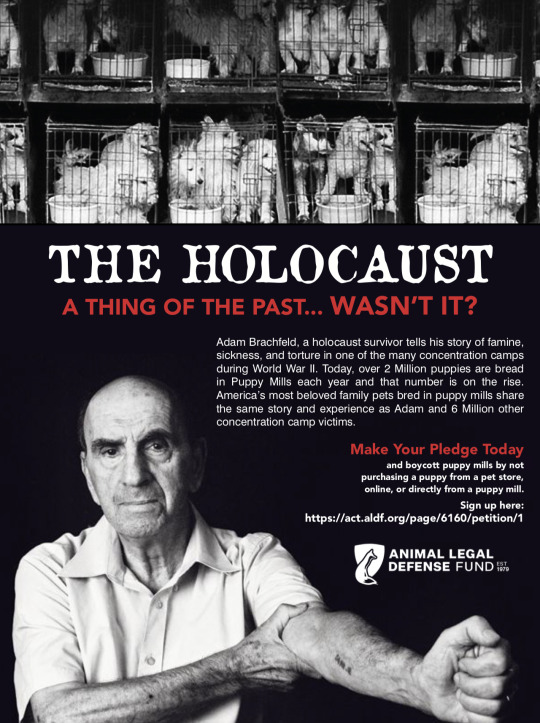
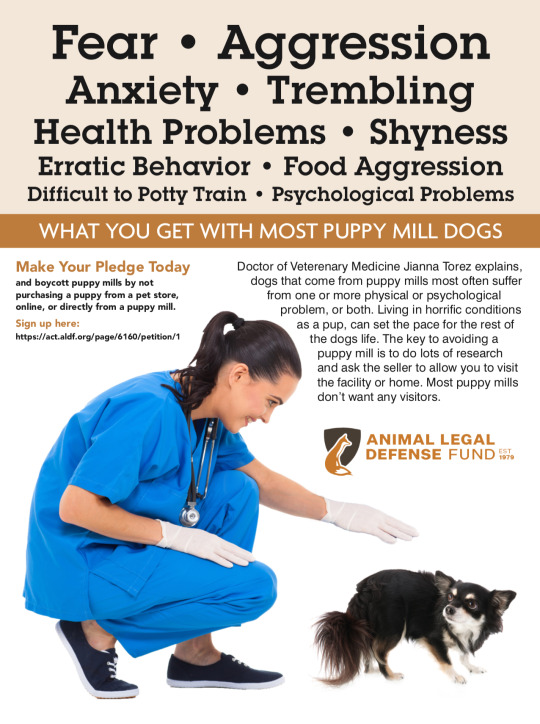
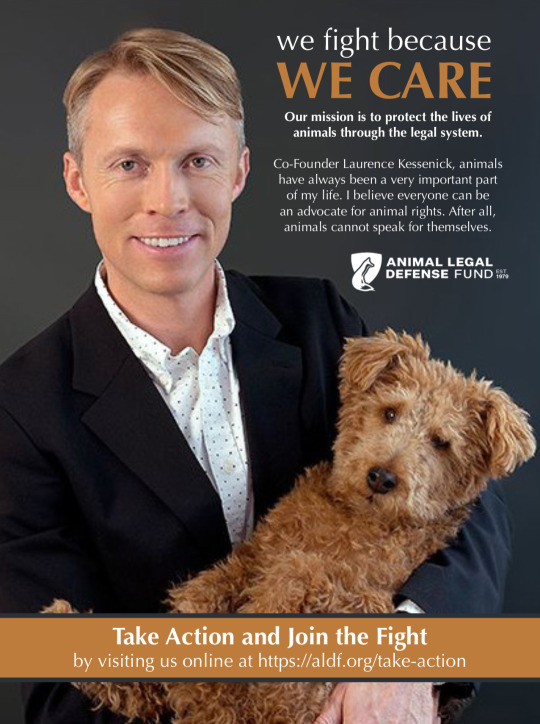
3 Revised Compositions:
My three revised comps. paint a much different picture than my original three. They work by themselves as well as a group. The overall message is about the way Animal Legal Defense Fund “Cares” for animals. The message communicated from the perspective of three uniquely different perspectives always delivers the idea of caring but, through the eyes of the foundation and supporters. Each idea of caring is delivered in a personal way coming from the standpoint of each person’s testimonial and supports in the specific way they are able to for the cause. The foundation cares so, “they fight”. The Veterinarian cares so, “she heals”. The average person cares so, “she provides”. What creates the brand voice in these ads is the layout of the ads. They are all aesthetically treated the same. In all 3 ads, the supporter is positioned in the same manner holding a puppy or two to show their emotional connection to the cause. The backgrounds, typography, and color palettes are also repeated within each of the ads, creating a branded style that can be connected to the personality of the organization. What was also improved on from the preliminary versions was the simplicity in communication. Very direct and shortened messages that deliver what is intended without any extra wording that may cause a reader to move past this ad quickly.
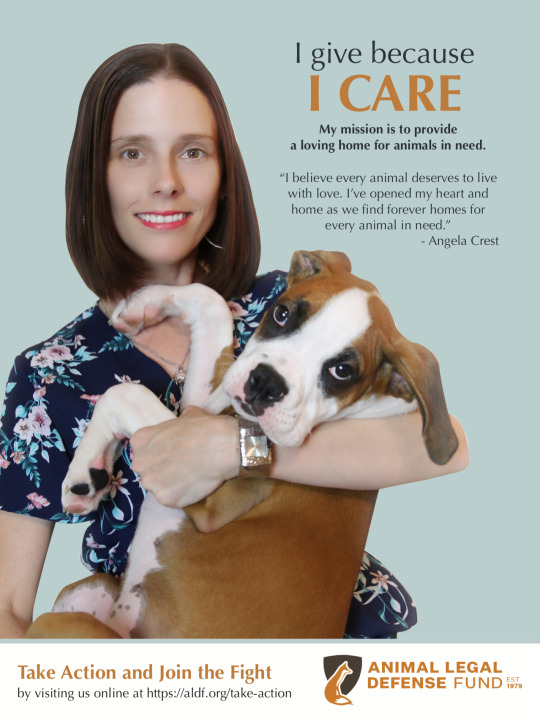

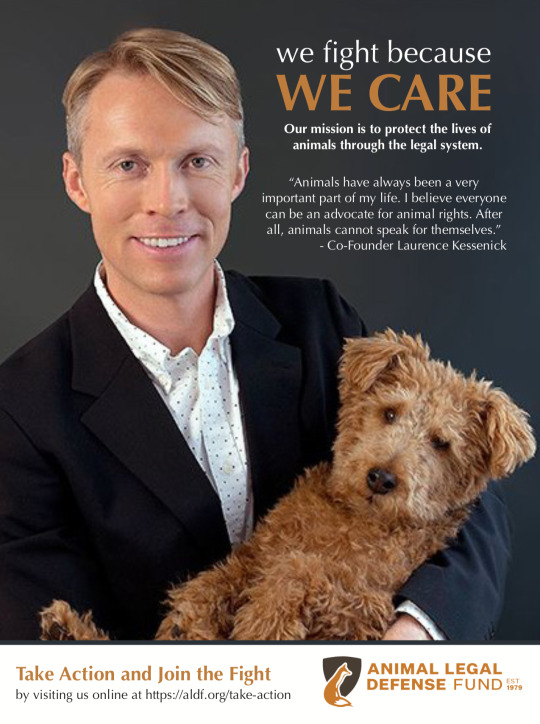
3 Take Aways:
The first thing I learned in Effective Copywriting is to always keep the brand as a whole, front of mind. As I began the process of developing ideas and ad copy for this project, I tried to deliver something that was highly impactful. Something that will stimulate and even shock a reader by drawing their attention with a powerful hook. In doing this, I lost sight of the brand message. I became so focused on creating stimulating copy, that it veered outside of what the brand represents. Keeping my mind focused and always aware of the brand character is something I learned to do much better through this project.
Second, I learned how to develop copy in a more effective manner. Currently a Creative Director for a consumer-packaged goods company, I usually am executing with copy provided by copywriters. Through my career, I have always focused more on composition of copy rather than creation of copy. I have developed a new respect for the difficulty level of doing this well. I also have learned how to spot when copy is not working for the brand the way it should. By making the mistakes myself, I learned what not to do.
Finally, I learned how difficult but, fun creating taglines can be. Out of all the projects this month, I had the most fun with taglines. I found myself thinking about taglines through the day that entire week. I also found myself looking at every tagline I could find in real time driving, reading, watching TV and online. While creating great impactful taglines that describe the essence of a company’s missions and visions is not a simple task, I have learned what bad taglines look like. For me, knowing what not to do, can always lead to the correct answer.
References:
Felton, G. (20130805). Advertising: Concept and Copy (Third Edition), 3rd Edition. [VitalSource]. Retrieved from https://bookshelf.vitalsource.com/#/books/9780393733921/
0 notes